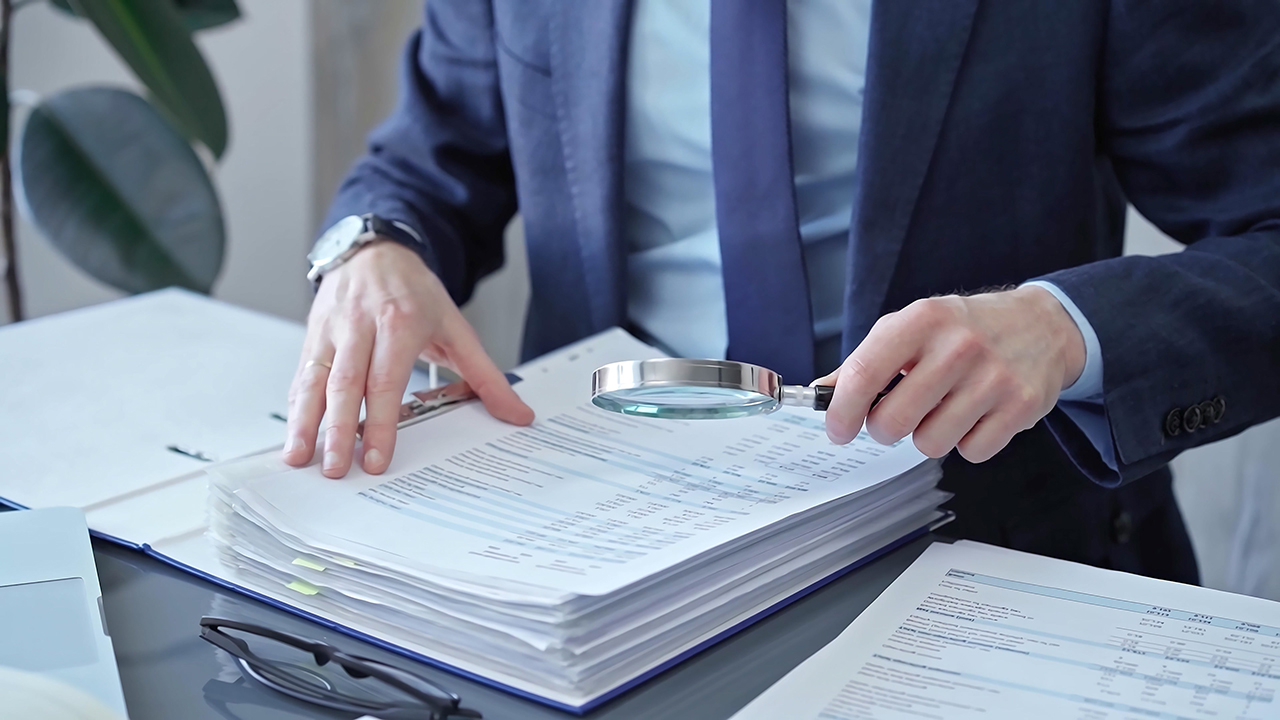The impact of FRS 102 amendments on accounting for leases
On 27 March 2024, the Financial Reporting Council (‘FRC’) issued ‘Amendments to FRS 102 The Financial Reporting Standard applicable in the UK and Republic of Ireland and other FRSs: Periodic Review 2024’
One of the most significant changes arising from this applies to leases.
For entities following FRS 102, (including Section 1A) the treatment of leases has been aligned with International Accounting Standard IFRS 16, and this will see major changes in the way figures are reported in the financial statements.
Changes to lease accounting
Effective for accounting periods commencing on or after 1 January 2026 (early adoption is permitted but not required) a ‘leases on balance sheet’ model needs to be adopted. There will no longer be any distinction between a finance lease and an operating lease as both will be accounted for in the same way. These changes affect accounting by lessees only, accounting by lessors is unaffected.
What is a lease?
A contract is, or contains, a lease if it conveys the right to control the use of an identified asset for a period of time in exchange for consideration. This happens when throughout the period of use, the customer has both the right to direct the use of the identified asset, and the right to obtain substantially all the economic benefits from that use.
Where a contract contains a lease the lessee recognises this on the balance sheet by recording both a liability and a Right of Use Asset (ROU) in the books of the lessee.
Measurement of the Lease Liability
The lease liability is the driving force and this is measured at the present value of the future lease payments, discounted using the interest rate implicit in the lease, or if that rate cannot be readily determined, the lessee’s incremental borrowing rate or the lessee’s obtainable borrowing rate for each lease at the date of initial application. Each rental payment will reduce the lease liability.
It is expected that most entities will use the obtainable borrowing rate, as this simply represents the rate at which the entity is able to borrow an amount equal to or greater than the undiscounted value of the lease payments over a similar term to the lease. One aspect of this is that the higher the discounting rate used, the less impact there is on the operating profit figure.
In future years, the lease liability is subsequently remeasured by reference to the unwinding of the discount and the lease payments made in the period.
Measurement of the Right of Use (ROU) asset
The ROU asset will be recognised initially at cost, made up of:
- The initial measurement of the lease liability;
- Any payments made at or before the commencement date;
- Less any lease incentives received;
- Any initial direct costs incurred; and
- Any provision recognised for dismantling or restoring the underlying asset.
Any service charge or similar amounts should be excluded.
Normal accounting rules regarding tangible fixed assets apply to ROU assets, which will generally be held at cost less depreciation and impairment, unless it is an investment property (held at fair value) or the entity elects to adopt a policy of revaluation.
Examples of the calculation of both a lease liability and related ROU asset are included in the appendix at the end of this document.
Are all leases capitalised?
No, there are two exemptions available:
(i) A lessee can choose not to apply the revised requirements to short-term leases for which the lease term ends within 12 months of the date of initial application, or
(ii) Leases for which the underlying asset is a ‘low value’ asset.
The focus is to ensure that the most significant leases are recognised on balance sheet. Examples of underlying assets that are not considered low value under the amended Standard are:
- Cars, vans, buses, coaches, trams, trucks, and lorries
- Cranes, excavators, loaders, and bulldozers
- Telehandlers and forklifts
- Tractors, harvesters, and related attachments
- Aircraft
- Land and buildings
Whilst not stipulated in the amended Standard, as general guidance, some underlying assets that could typically considered to be low value are:
- Tablet computers
- Personal computers
- Home printers / photocopiers
- Mobile / desk phones
- TV’s
- Small items of furniture
- Portable power tools
What is the impact on the profit and loss account and taxation?
Over time the same charge will eventually pass through the profit and loss account. Under the old rules this would have been via recognising an operating lease rental and going forward it will be via interest payable and depreciation charges. If the lease payments were tax deductible, then the interest payable and depreciation charges will be.
The current operating lease expense will be replaced with depreciation (and any impairment) of the right of use asset, and a finance cost for the unwinding of the lease liability.
What is the impact on key performance indicators (KPIs)?
Where a business holds any significant lease arrangements, many financial ratios and performance metrics will be impacted, including interest cover, EBITDA and operating profit. Gearing ratios may increase and capital ratios may decrease:
- EBITDA will increase by the value of the operating lease expense that is removed;
- Finance and depreciation costs will be higher;
- Net current assets will be decreased by the current element of the lease liability; and
- Gearing ratios may increase, depending on the definitions of debt.
These changes may therefore affect a company’s ability to meet financial covenants and comply with existing loan documentation with lenders.
Early engagement with lenders is highly recommended to assess the potential impact on covenants and to ensure the changes being reported in management information and year end financials are understood by all parties.
What about VAT?
Many property leases may not have VAT applied if an option to tax has not been applied. However, leases on some properties and plant and machinery will have VAT. When discounting cash flows it is the net cash flows that are used, the VAT is recognised at the point each lease payment is made.
Other potential consequences
Bringing ROU assets on to the balance sheet for the first time may have consequences for company size and audit requirements. For example, a company which currently meets two out of three of the thresholds for small companies but breaches one of either the Turnover or Employee limits, the additional amount of ROU assets recognised for the first time on the balance sheet may result in the entity now breaching the Gross Asset limit. They would therefore lead to failing two out of the three criteria with the consequence for the subsequent period being not able to apply the small company exemptions and also therefore requiring an audit.
What happens in the first year the new rules come into force?
Full retrospective adoption is prohibited. The only option is a ‘modified retrospective approach’, by which opening balances are created in the current year, and any historic correction to profit and loss is recognised directly as a movement in reserves. The current year will then show the profit and loss and balance sheet positions as if the new treatment under the revised Standard had always been adopted.
There is no restatement of comparative information, instead, the cumulative effect of initially applying the amendments is recognised as an adjustment to the opening balance of retained earnings at the date of initial application.
For entities that are subsidiaries of a parent applying International Financial Reporting Standards (IFRS), which have calculated lease liabilities and ROU assets under IFRS 16 for consolidation purposes, these figures can be used as a practical expedient.
Disclosure requirements
The following should be included in the
financial statements:
- A general description of significant leasing arrangements
-
Additional qualitative and quantitative information, such as:
- Future cash flows to which the lessee is potentially exposed, the types of discount rate used in calculating lease liabilities, and the proportion of the total lease liability calculated using each of those types of discount rate.
- Information about sale and leaseback transactions.
- Details about remeasurements of the lease liability following a lease modification.
- Interest expense.
-
Expenses relating to short
term leases/leases of low value
assets.
-
For each class of underlying ROU asset:
- Net Book Value (NBV) and depreciation brought forward and carried forward.
- Reconciliation showing additions, disposals etc.
- Lease commitments for short term leases/ leases of low value assets.
What should you be considering now?
The process and cost of implementing these changes could be significant, especially if you do not currently have systems to collate relevant lease data, so you should consider putting systems for this in place as soon as possible.
Whilst the first period for which the new lease accounting will apply to you may be around two years away, we recommend using this time to identify and understand the key terms of all lease agreements you currently have. Assess the extent of the changes to your financials in respect of your current operating leases, taking account of which may be considered to relate to low value assets. Also revisit any finance leases as although the impact will likely be far less, as they are already shown ‘on balance sheet’, you will still need to assess whether the amounts already recognised as assets and liabilities meet the new requirements.
Whilst the implementation of these changes should not stop the use of long leases, you should consider the impact of signing these in the future and intervening period on the financials and on associated covenants and reporting metrics.
Identify and assess any contractual arrangements you may have, for example borrowing covenants or performance related remuneration schemes that refer to KPIs such as EBITDA, and understand how they will be impacted. Borrowers should speak to lenders where there are debt covenants in place which may be affected by these accounting changes.
Assess your current accounting system. Is it set up for to accommodate these accounting changes, does it have suitable nominal accounts that can be used for ROU assets and lease liabilities?
Is using spreadsheets for the calculation of lease liabilities based on the discounted present value of cash flows suitable for your needs or would lease accounting software be more appropriate?
Companies which meet the criteria for Micro Entities but which are preparing Financial Statements under FRS 102 Section 1A may wish to switch to FRS 105 to avoid the capitalisation of leases as these changes are not being brought into that Standard, though this should be considered carefully in the round.
If you require advice, need assistance with recalculating your lease arrangements or have any concerns, please contact your team at Rickard Luckin, or if you are not already a client, contact Neil Brewer at neil.brewer@rickardluckin.co.uk.
If you have any questions about the above, or would like more information specific to your circumstances, please enter your email address below and we will get in touch:
















